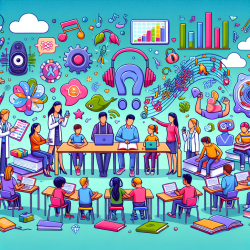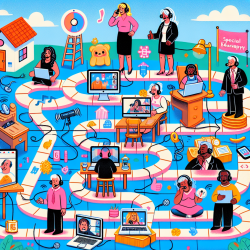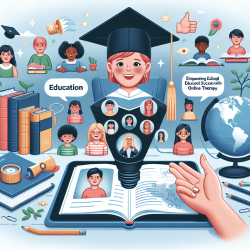As educators and therapists, our mission extends beyond the conventional teaching methodologies, diving deep into specialized strategies that cater to the unique needs of our students. The essence of our work lies in not just addressing educational requirements but also in fostering an environment that enhances overall communication abilities. A groundbreaking study, The Effect of an Audiologic Rehabilitation Program on Response to Scenarios Depicting Communication Breakdowns, sheds light on innovative approaches that can significantly improve how we tackle communication challenges within special education settings.
The study meticulously evaluated the effectiveness of an audiologic rehabilitation program tailored for residents of a home for the aged, providing us with valuable insights that can be adapted to special education environments. By focusing on scenarios that depicted typical communication problems, the research highlighted the importance of understanding and addressing the root causes of communication breakdowns. This approach is not just applicable to the elderly but is also incredibly relevant for students with special needs, who often face similar challenges in effectively communicating their thoughts and needs.
One of the key findings of the research was the identification of problem sources and solutions related to communication breakdowns. Interestingly, while there was no significant increase in the number of problems or solutions generated by the staff, the residents (or in our case, the students) showed a remarkable increase in both the identification of problems and the generation of solutions. This indicates that with the right intervention, individuals can learn to better navigate their communication environments, taking more control over their interactions.
Implementing the outcomes of this research in a special education context involves several strategic steps:
- Understanding the Environment: Just as the study focused on the interaction within a specific setting, educators must assess the communication environment of their students. This involves recognizing the physical, acoustical, and social factors that influence communication.
- Identifying Communication Strategies: The research emphasized the acquisition of new knowledge about communication strategies by participants. Educators should introduce and practice effective communication strategies tailored to the individual needs of their students.
- Empowering Students: A significant outcome of the study was the shift in responsibility for solving communication problems from the staff to the residents. Similarly, educators should empower students by encouraging autonomy and self-advocacy in communication.
- Utilizing Assistive Technologies: The study highlighted the role of assistive listening devices and hearing aids in improving communication. Exploring and incorporating appropriate assistive technologies can be a game-changer for students with auditory challenges.
Moreover, the research underlines the importance of an ecological approach to audiologic rehabilitation, which can be mirrored in educational settings. This approach considers the complex interplay between the individual, their communication partners, and the environment, ensuring a holistic intervention strategy.
Encouraging further research and application of these findings in special education can lead to more innovative solutions that address the diverse needs of our students. By adopting strategies informed by such research, educators can enhance the effectiveness of communication interventions, ultimately leading to improved educational outcomes and quality of life for students with special needs.
In conclusion, the insights gained from The Effect of an Audiologic Rehabilitation Program on Response to Scenarios Depicting Communication Breakdowns provide a valuable framework for improving communication strategies in special education. By understanding the specific challenges faced by our students and implementing targeted interventions, we can make significant strides in empowering them to overcome communication barriers. For those interested in delving deeper into the research and its implications, I highly encourage reading the original study. To read the original research paper, please follow this link: The Effect of an Audiologic Rehabilitation Program on Response to Scenarios Depicting Communication Breakdowns.










